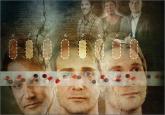Audio

Fatigue associated with depression
- Author:
- Matthew MacAluso, DO
News

Fatigue after depression responds to therapy. What are the next steps?
- Author:
- Zohaib Sohail, MD
- Matthew MacAluso, DO
A sufficient base of evidence is often lacking to guide pharmacotherapy for fatigue
News
Levomilnacipran for the treatment of major depressive disorder
- Author:
- Matthew MacAluso, DO
- Hala Kazanchi, MD
- Vikram Malhotra, MD
An SNRI with once-daily dosing, levomilnacipran decreased core symptoms of MDD and was well tolerated.
News

Overcoming medication nonadherence in schizophrenia: Strategies that can reduce harm
- Author:
- Matthew MacAluso, DO
- Shean McKnight, MD
Dosing strategies, direct inquiry, psychoeducation can improve outcomes
Audio
Off-label use of antipsychotics
- Author:
- Matthew MacAluso, DO
Matthew Macaluso, DO, talks about using intended and unintended effects of antipsychotics.
News
A mysterious physical and mental decline
- Author:
- Matthew MacAluso, DO
Since Mr. C developed intermittent fever, hematuria, and fatigue 2 months ago, his short-term memory has diminished so much that he forgets to eat...
